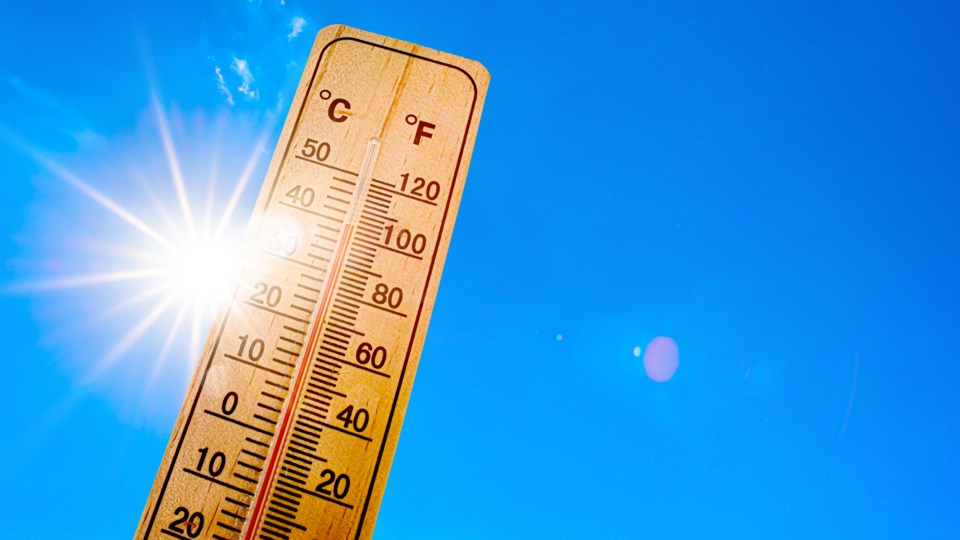Heat has never been my friend. Growing up in a house that didn’t have air conditioning (in the sense that we technically had air conditioning but never turned it on even once) in muggy Toronto where the humidity sometimes made it hard to breathe—I spent a good amount of time in my musty basement hiding from the heat.
The nights were tolerable—meaning you could leave your house in shorts and a T-shirt and that’s it, and still be warm enough to jump into someone’s sprinkler or pool at three in the morning. But you still eventually had to go home to a hot room to lie on top of your sheets, two feet from a massive fan that kind of cooled you by evaporating your sweat—making it worth the 90 decibels you tried and failed to sleep through.
But while heat made my stocky, sweaty and generally pale life unpleasant, I never feared it like I do in Whistler.
We had some rain and cooler temperatures this spring, more than the past two years, but not enough—rainfall has been below average for years, and the forests are already drying out. The wildfire risk is increasing by the day.
Full credit to the municipality for taking the risks seriously since at least 2004 when the first tree-thinning projects got underway in Lost Lake Park, aided by a draught horse because we were on bit of a green kick. Through 20 years of FireSmart and thinning programs, there’s a lot less fuel in Whistler than there used to be. We also have specialized equipment standing by, a serious emergency and evacuation plan, and a text alert system if there’s ever a fire we need to run away from. If you haven’t signed up, get on it: whistler.ca/services/emergency/whistler-alert.
But while these things are nice to have, we need to do more. As has been noted countless times, it’s not a question of “if” Whistler is going to experience a wildfire, it’s a question of “when.” Everybody in town needs to be prepared.
Living in denial will only get you so far. There was a letter to the editor in Pique last year that destroyed the whole “Whistler has multimillion dollar properties so the province isn’t going to let it burn” argument. You think the wealthy town of West Kelowna has never seen a fire before, or that the province let 170 buildings burn there last year? Wildfires move fast and grow quickly, and there’s only so much fire crews can do in the short period of time we may have.
The bottom line is Whistler has trees and any tree will burn if it’s dry enough. And it’s dry enough now.
Do yourself a favour and Google “Gun Lake fire tornado” to see what it looks like when a wildfire burns out of control, fed by winds and abundant fuel. Or footage taken from the Kelowna side of the lake, where cinders were raining down while they watched their neighbours’ houses burn. It’s more serious than you can imagine.
Wildfires can travel a lot faster than people. Two people died in Lytton in 2021, unable to get to their vehicles as the wildfires caught up with them. The West Kelowna fires of 2023 grew from 64 hectares to 6,800 hectares in 24 hours. The Lahaina fires in Maui that killed nearly 170 people covered roughly a mile of ground a minute—a speed of 96 kilometres an hour. With enough heat, a wildfire spreads more like an explosion than something driven by wind alone.
We have to take this seriously. We need to be ready.
The first step is not to accidentally start any fires. Whistler has had a lot of close calls over the years, with firefighters rushing to douse unattended campfires and lit cigarettes catching on, but nothing that could flare into anything. Not being an idiot and respecting the dry conditions is literally half the battle.
The other half of the battle is lightning, which we have zero control over. In 2023 we had a massive lightning storm blasting trees all over the valley, but only a few trees smouldered after and were quickly put out. We were incredibly lucky, given the extreme conditions.
The second step is to be ready for the “when, not if” part. Keep your vehicles topped up, because there is absolutely going to be traffic if a fire starts. Make sure you have an evacuation plan and your go-bags packed with everything you need to get through at least three days—some food, water, medicine, pet food, even some cash in case credit card machines go down. There’s a great list here: whistler.ca/services/emergency/evacuating-whistler/personalize-your-evacuation-plan.
I’m the first to admit I haven’t been as on top of this as I should, with a half-assed go-bag in my front closet the last few summers, but after standing at my window at four in the morning last year watching lightning strikes hammer the forests above me, I made a promise to do it right.
The time to be prepared is here. The temperatures are up, the forests are dry, and we’re one careless act, freak accident, or lightning bolt away from a disaster.




